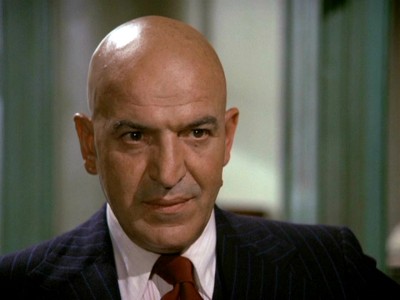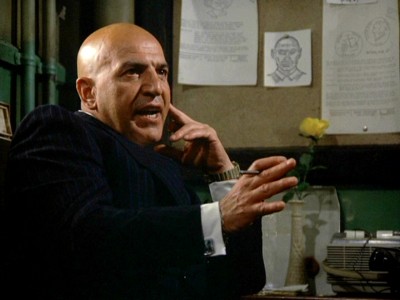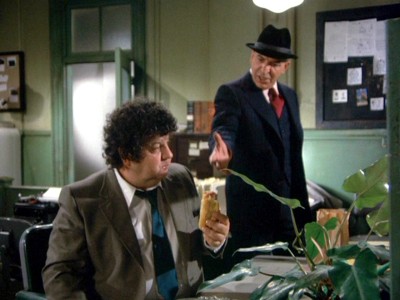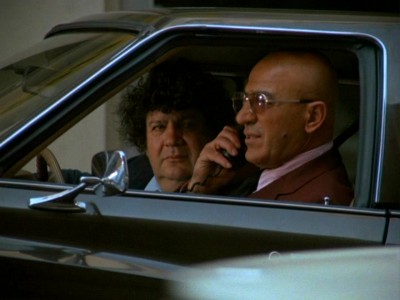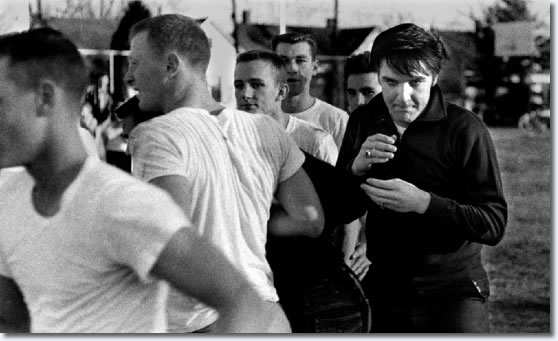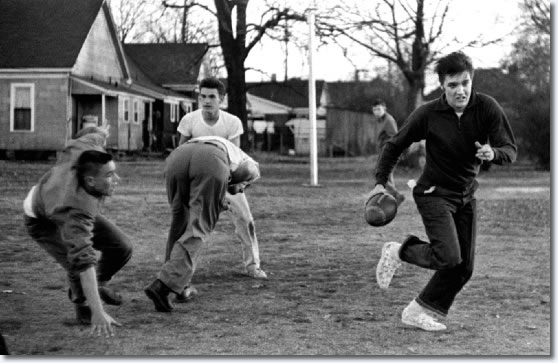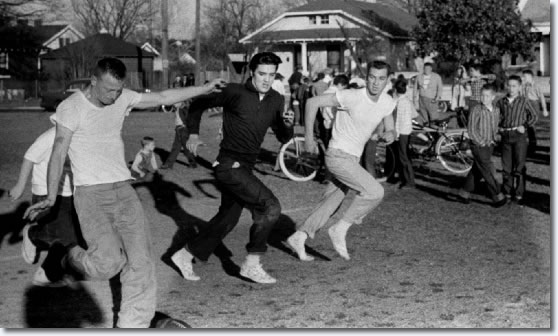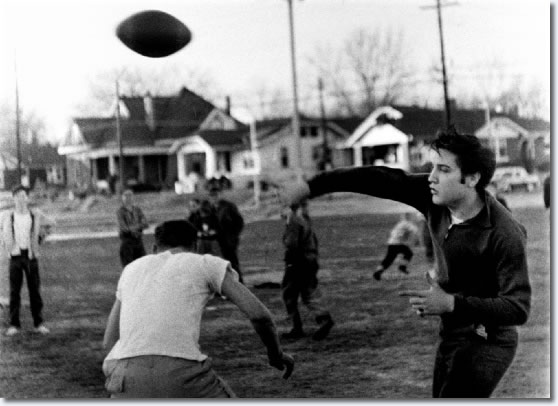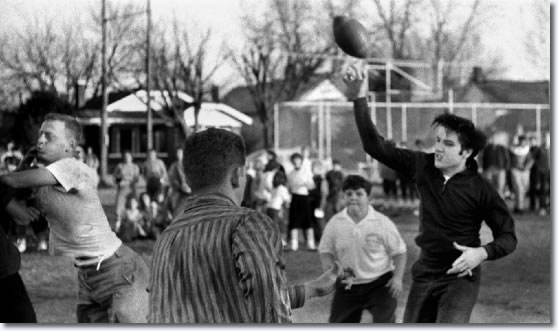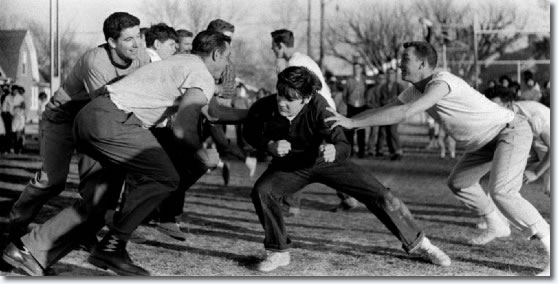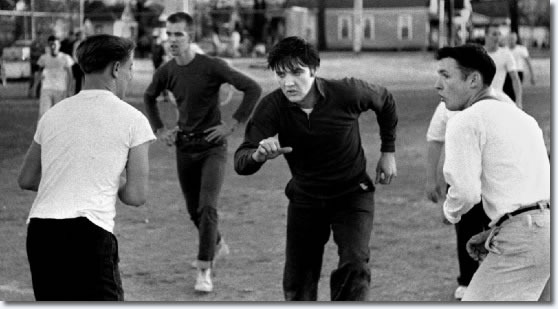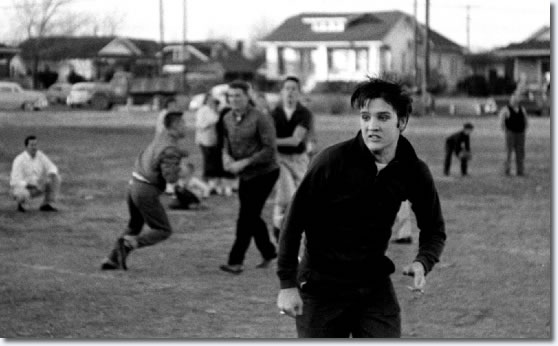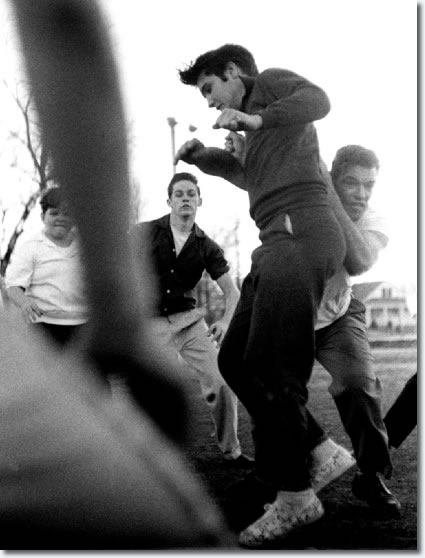Aficionados of vintage crime TV know that Kojak was special, but newcomers to the series will be surprised at how well it holds up today, with complex, dense mysteries, a remarkably forceful, sensitive (and often hilarious) lead performance, and a gritty production design that screams "quality" with a capital "K," 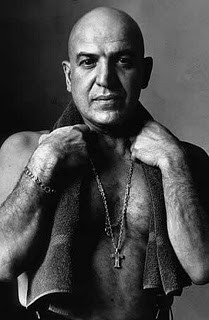
New York City, 1974. NYPD's 13th Precinct, Manhattan South Patrol Borough. Avuncular detective Captain Frank McNeil (Dan Frazer) has a big, loud, bald problem on his hands: Lieutenant Theodopolous "Theo" Kojak (Telly Savalas). In a frenetic borough in the busiest city in the world, where violent, persistent crime can range from rape to sniper fire to mad bombers to diamond heists, McNeil is lucky to have as resolute a crime fighter as Kojak on his team...but look out when Theo blows his cool, baby, because you might just find yourself on the end of a withering put-down and accompanying sarcastic sneer. Sartorially resplendent Kojak may not observe all the niceties of protocol when it comes to his $240-a-week-after-taxes job, but he gets the job done, you dig? He's cynical, and contemptuous, and generally pissed off at everything...but he's also surprisingly understanding and even sympathetic to the junkies, whores, stoolies, and other damaged people he encounters in his pressure-cooker occupation. The most frequent targets of his affectionate put-downs are the members of his squad: tough, James Caan-like hothead Detective Bobby Crocker (Kevin Dobson); fuzzy, slightly befuddled Detective Stavros (George "Demosthenes" Savalas), and anonymous filler detectives Saperstein and Rizzo (Mark Russell and Vince Conti).
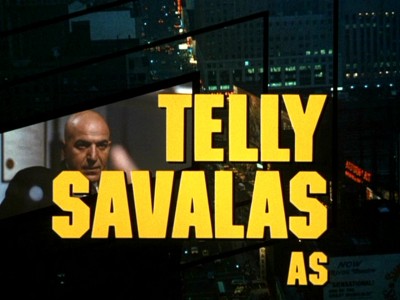
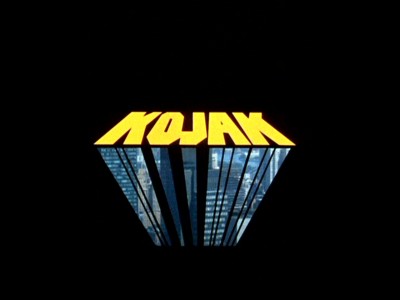
Jeeee-sus, what a great fuckin' show. I haven't seen Kojak in decades...although I did see Telly's reboot in '89 (just wasn't the same, sadly), and the Ving Rhames "reimagining" in '05 (pathetic). A show we never missed at my house way back then, I suppose what I remembered most about the show were the two elements that garnered the most publicity―the Tootsie Pop® shtick and Savalas' baldness―the show's two elements that had the very least to do with making the show great. If you didn't grow up during the early '70s, then it's hard to imagine the stir chrome-domed Savalas caused when he headlined Kojak (there just weren't any completely bald guys on TV...unless you counted Yul Brynner's failed series bid for Anna and the King in '72). And the whole lollipop thing became a remembered gimmick that quickly morphed into a shorthand joke for others referencing the show. Of course today, bald is everywhere on TV, and a character sucking a lollipop, within the context of today's network television, is about the most benign character hook I can think of next to Buffy carrying around Mrs. Beasley. But those two completely inconsequential elements somehow grabbed the most publicity, and right or wrong, they gave a visual hook for the series that helped push it into iconic status.
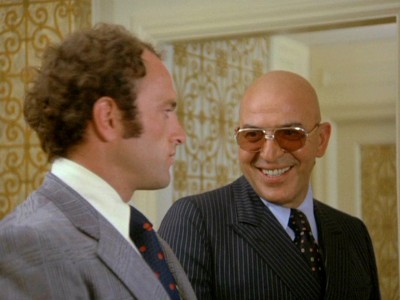
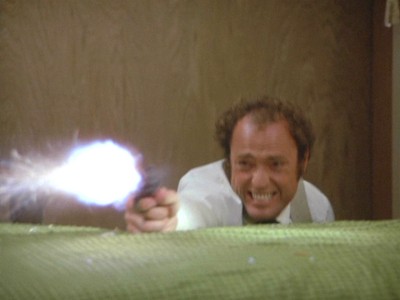
What should be remembered about Kojak is an embarrassment of riches on display here, including beautifully-detailed scripts with intriguing, complex characters, brilliant casting for the one-off supporting roles, tight, no-nonsense direction, a production design that consistently scored for gritty realism, and most importantly, one of the best lead performances in a drama from that entire decade. During the 1974-1975 TV season, Kojak had a lot of competition in the cops/private dicks/mystery genres field, including such classics as Mannix (there...are you happy? Don't email me), Columbo, McMillian and Wife, McCloud, The Rookies, Hawaii Five-O,Barnaby Jones, Adam-12, Police Story, Cannon, The Streets of San Francisco, Harry-O,Ironside, The Rockford Files, and Police Woman (can you see why I miss old-timey TV? That's all in one season). And while Columbo had its brilliant Rubik's Cube® mysteries, and Police Story went for almost documentary realism in its depiction of daily police work, Kojak had elements of both, anchored by a charismatic lead performance that is still the benchmark for similar cop characters that have proliferated ad nauseam since Telly Savalas brought Theo Kojak to life.
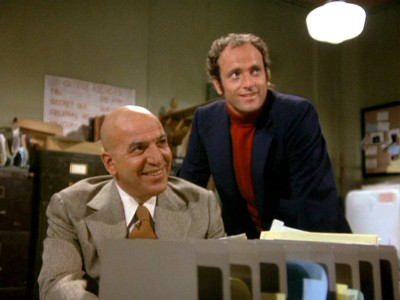
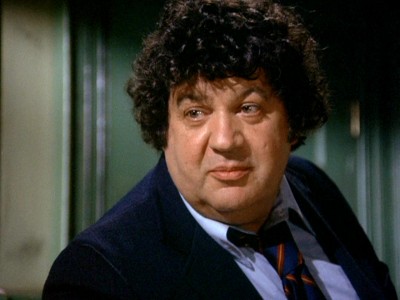
Hitting the same notes as The French Connection, The Godfather, Shaft, and The Seven-Ups,Kojak tapped into that grimy urban actioner landscape that accurately had the dirt and smell and feel of those big-screen efforts. Sure, Kojak took more than a few trips to Universal's backlot, and some of its sets look exactly like all those other Universal sets from countless other TV shows and movies. But extensive location work in New York City (that's really Telly powering his Buick around in a lot of scenes), along with real buildings and offices used throughout the episodes (some in L.A., of course), give Kojak a verisimilitude that's palpable (Kojak's office may be a set on a Universal sound stage, but it's grungy and dingy as hell, unlike the sparkling, blown-out, antiseptic offices of SoCal's Dragnet and Adam-12). And unlike the clipped, surreal talk of Jack Webb's brilliant cop shows, Kojak's New Yawk-ese lingo is loud and loose, and full of jabs and jibes. It looks and sounds genuine, because the production design is going for realism, and Savalas―no crew-cut military type like Kent McCord, or feathered-haired glamour boy like Streets' Michael Douglas―seems like the kind of hard-assed, smart-assed, street-wise New York detective you might meet if you somehow got mixed up in a gangland slaying. The producers were smart, too, in making sure that the supporting players each week didn't come from the "celebrity" wing of Central Casting ("Tonight, on Kojak, George Hamilton and Joey Heatherton guest star!"), instead going with actors (many New York theatre-trained) who may look familiar, but who focus more on delivering the goods with their carefully-drawn characters. Even Kojak's powerful but non-descript car (a brown four-door Buick Century) fits right in with the show's realistic aesthetic. We don't get a lot of extraneous b.s. about Kojak's personal life, or after-hours glimpses of him hanging out with his co-workers (which doesn't look like it happens, anyway). It's just the complicated, hairy cases Kojak works, in the craziest city on Earth.
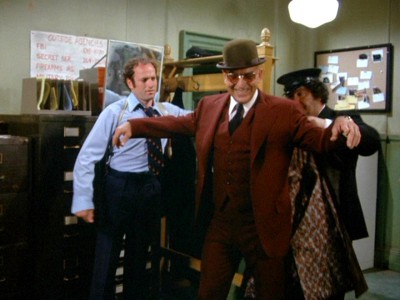
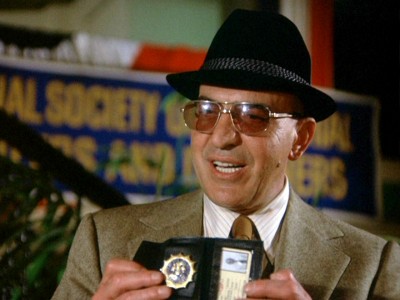
I'm sure that even if Kojak didn't sport some of the best scripting in a cop show from that period, it would be remembered for Savalas' creation. How much of that was Savalas and how much of that was the producers and writers, it's always difficult to say. Even without Savalas' overpowering interpretation, the Kojak character would be memorable: a tough, ballsy, uber-confident detective who sneers at and cajoles his co-workers, while showing an alternately sensitive, even tender side to his nature whenever he meets up with the fallible results of criminal activity. A cop who pronounces the "w" in "sword," yelling "shaddup!" with gusto, this cop also knows who Guy Fawkes is, and has read Edgar Allen Poe. He grew up in a "sewer" he now wants to clean up, but he's obviously educated and sensitized outside his circle of influences. He can bounce around a junkie because he's pissed off...and then smooth the boy's hair down and pat his cheek when he sees how hard the kid is trying to kick the habit. When was there a cop like that on TV, before Kojak?
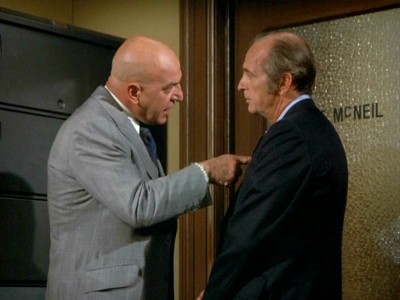
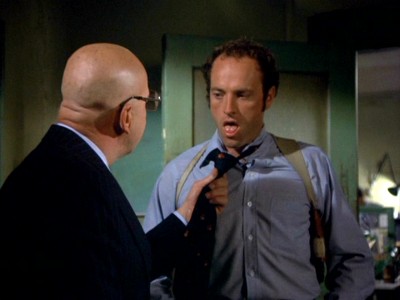
Kojak is an intriguing, fascinating character, perhaps made even more so now by our own slavish adherence to P.C. dogma (at least as perpetrated in our entertainment/media culture), where the gloriously Greek Kojak confidently doesn't think twice about laying it out there when it comes to referencing racial tensions. In Wall Street Gunfighter, Kojak talks to a reluctant witness―a Jewish broker who's engaged in a fencing duel with a millionaire Arab investor: "Let me get this straight: you got this Arab out there with a sword [the "w" pronounced] on the dance floor waving it in front of your Jewish face and you don't blink. So what you're telling me is a guy with a gun, he closed both your steely eyes? Hey, Ali...why don't you do a knife job on him?" There was a time in '70s network television where it looked like characters and shows were going to finally let it all hang out in terms of race and stereotypes and ethnicity from all sides, with all the accompanying messy observations, truths, and lies laid out for viewers to chew over and discuss. Those days are long gone; it's all a little too one-sided now, and shows like Kojak bring that unfortunate fact out in sharp relief.
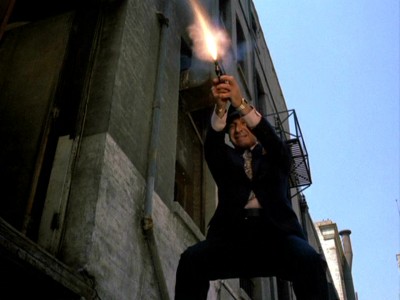
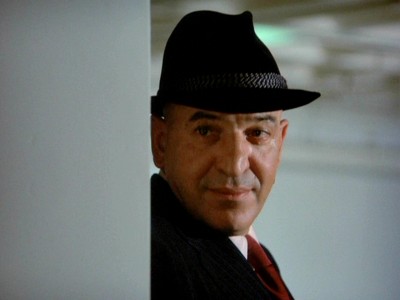
As for Telly Savalas...what the hell can you say about him that doesn't start with "magnificent"? His entrance in the 90-minute season opener (the excellent The Chinatown Murders, written by series producer Jack Laird and directed by Jeannot Szwarc) sums up Savalas' appeal perfectly. Juggling a cup of hot coffee and a cruller in one hand while whipping around his Buick with the other, siren blaring, Kojak arrives at the crime scene with a subordinate asking him what gives with the siren, to which Kojak balefully returns, "If I can get up at 6:00am, so can the rest of Manhattan!" And there's your character. And that's a star. It's probably easy to forget, now that Savalas is so thoroughly identified with the Kojak character, that it was probably a step down, careerwise, for him to take on the one-shot The Marcus-Nelson Murders telemovie that led to the series. After all, Savalas started in radio and then television, working his way up to supporting roles in big feature films, even garnering an Academy Award nomination (Birdman of Alcatraz) before scoring in big international box office hits like The Dirty Dozen and On Her Majesty's Secret Service (the Bond series' best Blofeld, bar none: cultured, suave, menacing). However, by the time Kojak came along, he was petering out in misfires like A Town Called Bastard, Pancho Villa, Redneck, Horror Express, and Lisa and the Devil―not exactly Hollywood A-level leading man material.
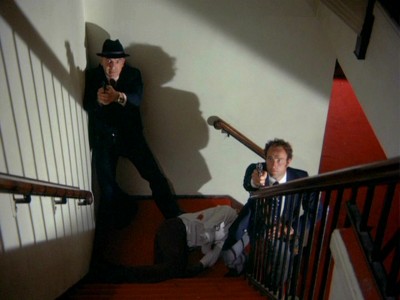
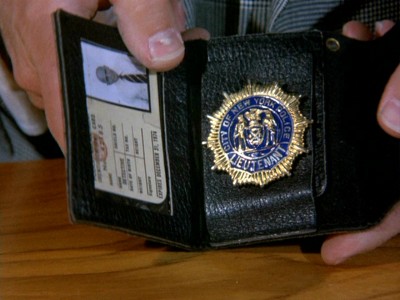
But I suspect this new-found lead stardom (it's all his show; he's not sharing the spotlight withanyone) is exactly what fed his loose, often hilarious take on the character. After years and years of playing second fiddle to bigger stars, a powerful reserve of energy and sparks must have been building up in the overly-talented performer, waiting for a venue, and Savalas has it finally, here, in a weekly network showcase. And he runs with it, baby. I know some new viewers and reviewers might focus on all the then-trendy "baby" slang thrown around, and the "coochie coos," labeling the performance and by extension the show, those horrid terms of "campy" and "cheesy." However, his turn here isn't "hammy" so much as it's brilliantly commanding...and wickedly funny. This is one of the best examples of "joy of performance" I've seen with an actor and his character. Savalas owns the screen, and he's clearly enjoying every second, alternating between barking commands, oozing insincerity when insulting a co-worker, smiling facetiously when trying to charm a reluctant witness, or going dead quiet and thoughtful when something reaches him emotionally. A lot of people eventually goofed on Savalas when he really started to play up the whole disco-era machoness of his Kojak persona in other projects (see above picture), but here in this second season, it's a priceless combination of masculinity and smarts, with no prisoners taken and no apologies offered to victims of his sarcasm and wit. In a word, he's hilarious here (when he's not believably dramatic), whether he's openly breaking character when his real-life brother George inexplicably starts talking like James Mason in one scene (Hush Now, Don't You Die), or when he adlibs with Dobson, looking him up and down like a chick before he nonsensically exits a scene with a breathy, "I don't like anyone being rude to my men on the phone." (Night of the Piraeus). People may have laughed at the sight of disco Telly Savalas in the classically bad one-off variety special, Telly (oh god please someone find that and release it...), but they're laughing with him here, in his greatest role―one of the best performances in any television show, in any decade.
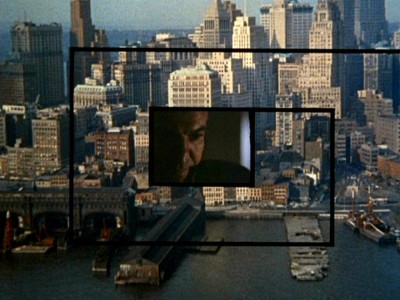
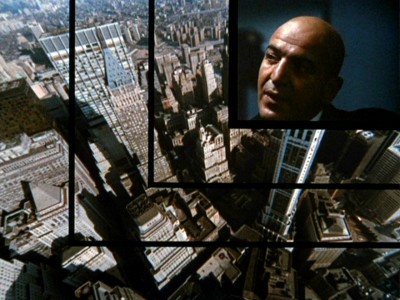
It's unfortunate, then, that CBS took a Nielsen Top Ten phenomenon, and turned it into a Top 15 and falling series. Kojak roared out of the gate its premiere season, scoring a remarkable 7th-most popular show on television for the 1973-1974 season at its 10:00pm Wednesday timeslot―a perfect day and time for this kind of series. Unfortunately, CBS took their big new hit and used it as a counter programming hammer against NBC's successful Sunday night line up of lead-in The Wonderful World of Disney and The NBC Sunday Mystery movie,featuring Columbo, McCloud, McMillan and Wife, and new stiff, Amy Prentiss. The gambit worked, dropping The NBC Sunday Mystery Movie down from 14th in 1973-1974, to 24th against Kojak in 1974-1975. However, Kojak's ratings suffered, too, from the timeslot change. Sunday just wasn't a good match for this edgy, hard-hitting show (The NBC Sunday Mystery Movie was more about wit and glamour, rather than pimps and whores getting busted), and it didn't help that Kojak's new lead-in, instead of solid Cannon the year before on Wednesday, was the anemic "family values" drama, Apple's Way―a mismatch if there ever was one (jesus, one of my friend's mom bought him an Apple's Way lunchbox, can you imagine? Poor bastard). Plugging in Cher's stand-alone variety show, Cher, for Apple's Way midseason, helped Kojak a little...but not nearly enough. The only one who benefited from Kojak's new move was lead-out Mannix, which saw its adult audience (the ones not watching Kojak with their kids) put the veteran series back into the Nielsen Top Twenty, after being out of the Top Thirty for two whole years. CBS would stubbornly keep Kojak as its Sunday night anchor for the next three fall seasons, slowing killing off its once-mighty audience.
